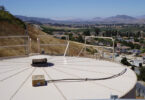In many parts of the world, conventional water treatment systems remain out of reach. They’re either too costly, too complex, or too dependent on unreliable power infrastructure. But AguaClara Reach, a nonprofit engineering organisation, is working to change that by reimagining what clean water technology can look like in underserved communities. Their work couldn’t be happening at a more important time with around 2.2 billion people around the world still lacking access to safe drinking water (UNICEF), and approximately 3.5 million people dying each year due to inadequate water supply, sanitation and hygiene (United Nations).
At the heart of AguaClara’s mission is an exciting vision: delivering high-quality water using low-tech, sustainable and locally adaptable systems. It’s a vision that’s already proving very effective. Not only is it helping to improve health outcomes, it is transforming entire communities.
Designed for Reality
AguaClara’s plants are engineered specifically for the realities of rural and resource-limited settings. They design water treatment plants to remove harmful pathogens and particles, but also focus on providing a resilient and reliable design. Simplicity is key.
The primary threats to water quality in many of the regions AguaClara serves include microbial contamination and sediment-laden turbidity from erosion. Their systems are engineered specifically to address these challenges without relying on imported components or complex maintenance. In rural settings where untreated surface water is often the only available source, AguaClara’s simple, robust systems offer a practical lifeline. The ability to process highly turbid water and reduce pathogen risk without relying on electricity is a wonderful technological achievement.
Cheer Tsang, one of the Board of Directors at AguaClara Reach, was able to explain more about the technology:
“Conventional high-tech water treatment technologies combine software, sensors and mechanised controls for plant operation. These systems require many moving specialised parts that inevitably break. Too often, the result is that the entire plant is abandoned after a few years. However, at AguaClara Reach we use very few moving parts, which decreases failure modes. We also use local materials and labour, making the plant less expensive to build, maintain and operate. No electricity is required to operate our plants, ensuring reliable treatment.”
This approach has enabled AguaClara to address not just technical challenges but also critical social issues, such as gender inequality and public health.
“In the communities where an AguaClara plant has been installed, readily available safe water on tap eliminates the need for people to travel for miles to fetch water or to purchase bottled water at higher prices. As this burden often falls on women and girls, the time spent traveling to and from a water source can prohibit girls from receiving an education.”
Engineered for Sustainability
AguaClara Reach is committed to long-term sustainability. All the core treatment processes are designed to work entirely without electricity and they encourage local adaptation to ensure communities have both the knowledge and the tools to maintain their own systems.
“These processes have been developed and optimised through decades of research and can consistently treat raw water with a turbidity up to 1000 NTU to a finished effluent of less than 1 NTU. The open-source design, consisting of non-proprietary materials with few moving parts, makes long-term treatment system operation and maintenance affordable.”
A powerful example of this can be found in Honduras, where AguaClara has helped build over 20 gravity-powered water treatment plants serving tens of thousands of people. Each system is operated by a local water board trained in the operation and maintenance of the plant. The boards collect small user tariffs (affordable and scaled to income levels) which fund upkeep, repairs, and salaries for operators. This has resulted in systems that are still running smoothly over a decade after installation. More importantly, they are fully owned by the communities themselves, transforming water access from a temporary aid project into a permanent public service.
A New Model for Global Water Access
AguaClara’s work raises an important question for the future of water treatment. Should more regions be focusing on accessibility and eliminating complexity?
“We see technology evolving as a way to close the gap between communities that already have safe, reliable water and those that have been historically left behind. Many conventional water technologies are too complex, costly or dependent on electricity and imported parts, which makes them difficult to sustain in rural or resource-limited settings.”
Instead, AguaClara is pioneering a model of technology that is simple to operate, built from locally available materials and designed to run on gravity. Their systems represent a powerful example of how thoughtful, low-tech engineering can offer reliable and scalable solutions.
“The most impactful technologies will be those that are open-source, adaptable to different water quality challenges, and designed with long-term sustainability in mind.”
In a world racing for high-tech fixes, AguaClara proves that sometimes the most radical innovations are the ones that let gravity (and local communities) do the work.






